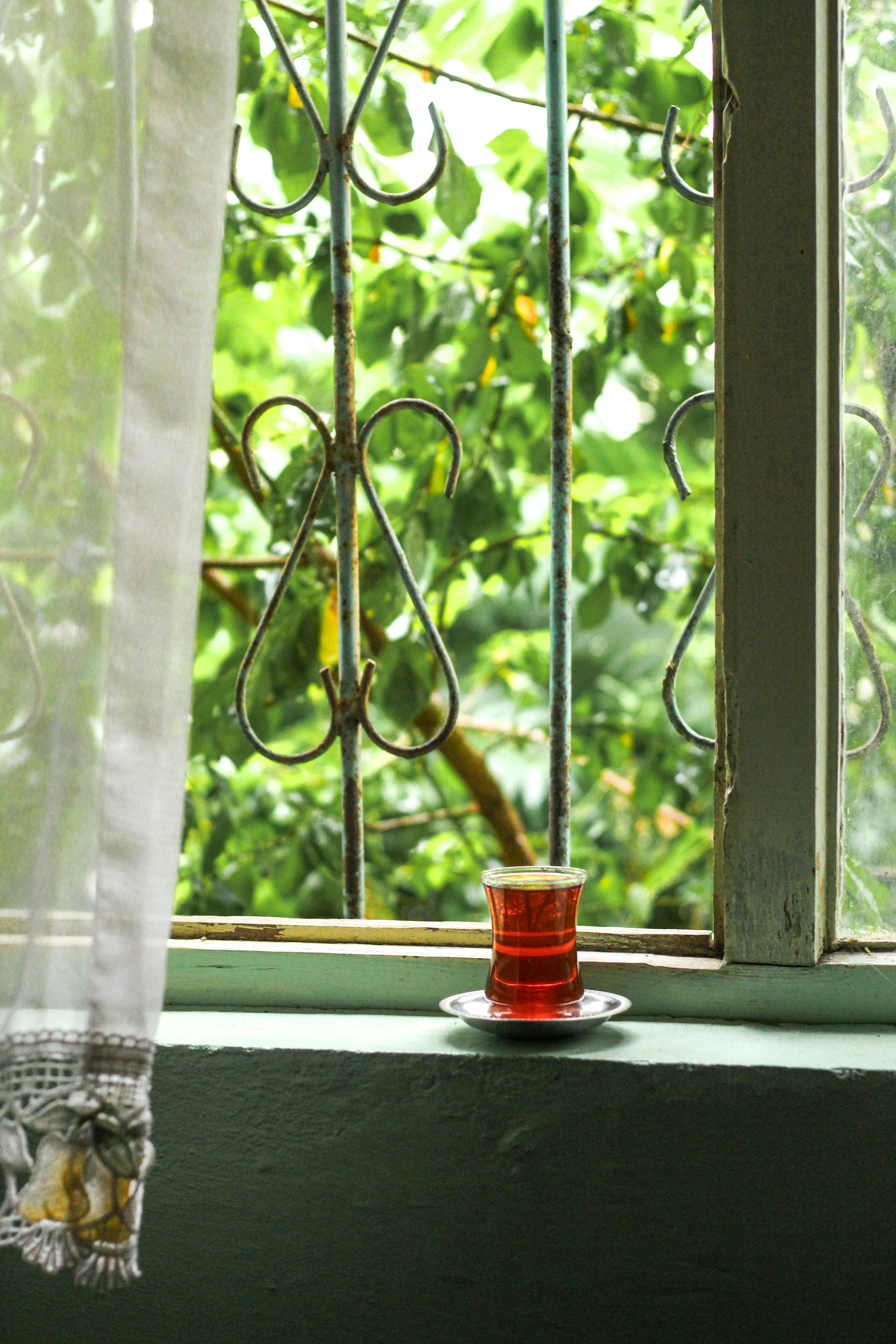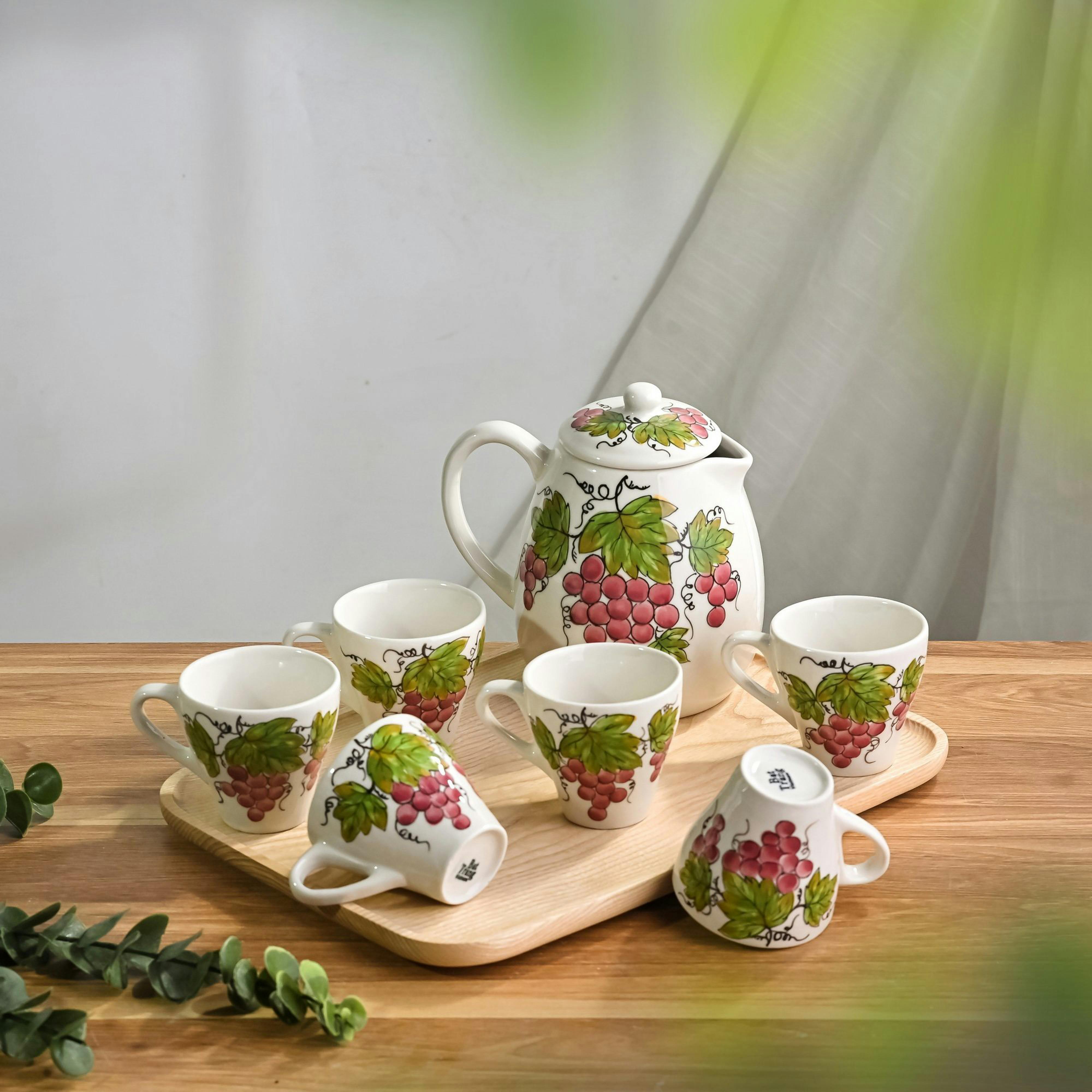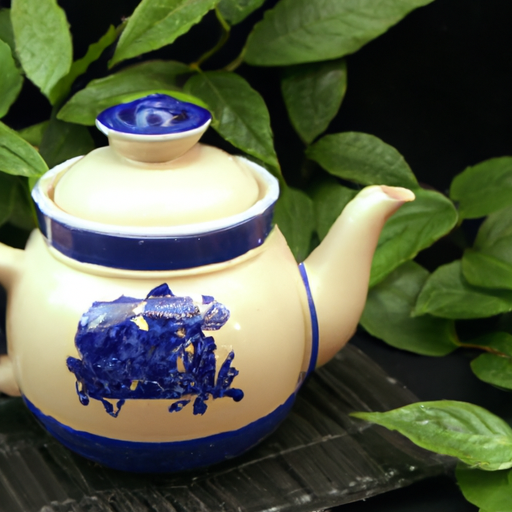Delve into the vibrant and enchanting world of Traditional Chinese Tea Culture: A Taste Of Elegance And History. Tastepan.com is here to take you on a captivating journey into the rich tapestry of flavor and tradition that is deeply rooted in Chinese tea culture. Discover the intricate art of tea preparation, the significance of tea ceremonies, and the fascinating history behind each unique tea variety. From the delicate flavors of green tea to the full-bodied richness of pu-erh, prepare to be transported to a realm where elegance and history blend seamlessly together in every sip. Immerse yourself in the captivating world of Traditional Chinese Tea Culture and embark on an unforgettable gastronomic adventure.

History of Chinese Tea
Origins of tea in China
Tea has a long and fascinating history that dates back thousands of years, with its origins rooted in China. According to legend, the discovery of tea can be attributed to Emperor Shennong, a mythical figure from ancient Chinese folklore. It is believed that around 2737 BCE, while resting under a tree, a few tea leaves accidentally fell into a pot of boiling water, creating a fragrant and invigorating beverage. This serendipitous moment marked the beginning of tea’s journey in China.
Development of tea culture
As tea gained popularity in China, so did its cultivation, processing, and consumption. During the Tang Dynasty (618-907 CE), tea became an integral part of Chinese culture and social life. It was during this period that tea drinking evolved from a medicinal practice to a recreational and ceremonial activity. Tea houses began to pop up across the country, serving as gathering places for intellectuals, poets, and artists to engage in lively discussions while enjoying a cup of tea. The Song Dynasty (960-1279 CE) further elevated tea culture with the development of tea competitions and the refinement of tea preparation techniques.
Influence of Buddhism on tea culture
The arrival of Buddhism in China during the 1st century CE profoundly impacted tea culture. Buddhist monks, recognizing tea’s ability to aid in meditation and concentration, embraced it as an essential part of their spiritual practice. They incorporated tea drinking into their rituals and introduced new methods of tea preparation. The emphasis on mindfulness and appreciation of the present moment that Buddhism promotes beautifully harmonized with the quiet contemplation involved in sipping tea. This intersection of Buddhism and tea culture greatly shaped the way tea is perceived and enjoyed in China.
Types of Chinese Tea
China is renowned for its wide range of tea varieties, each with its distinct flavor, aroma, and processing techniques. Here are some of the most prominent types of Chinese tea:
Green tea
Green tea, known as lu cha in Chinese, is one of the most common and well-loved types of tea. It is revered for its refreshing taste and numerous health benefits. Green tea leaves are withered, pan-fired or steamed, rolled, and then dried to preserve their vibrant green color and natural flavors. Some famous varieties of green tea include Longjing (Dragon Well) from Zhejiang province and Bi Luo Chun from Jiangsu province.
Black tea
Known as hong cha in Chinese, black tea undergoes a fermentation process that gives it a robust, full-bodied flavor. The leaves are fully oxidized before being heated, rolled, and dried. Black tea is often enjoyed with milk or sugar and is popular for its bold taste and invigorating qualities. Most black teas in China are produced in Yunnan province, with Dian Hong being a prominent variety.
Oolong tea
Oolong tea, also known as wulong cha, is a partially oxidized tea that falls between green and black teas in terms of fermentation. The leaves are withered, rolled, and then allowed to partially oxidize before being fired, resulting in a complex and aromatic taste. Oolong teas come in various styles, such as Tie Guan Yin from Fujian province and Da Hong Pao from Wuyi Mountains.
White tea
White tea, bai cha in Chinese, is the least processed among the major tea categories. It is made from young tea buds and leaves that are plucked before they fully open. The minimal processing allows the delicate flavors and natural sweetness of the tea to shine through. White teas are appreciated for their subtle, floral notes and light, mellow taste. Silver Needle and White Peony are popular white tea varieties.
Yellow tea
Yellow tea, huang cha, is a rare and highly prized type of tea with a unique production process. It undergoes a slight fermentation and oxidation, similar to green tea, but with an additional step of yellowing. The resulting tea has a smooth, sweet flavor and a distinctive yellowish hue. Huo Shan Huang Ya and Junshan Yinzhen are renowned yellow tea varieties.
Pu-erh tea
Pu-erh tea, named after the town of Pu’er in Yunnan province, is a fermented tea that ages over time. It can be either “raw” (sheng) or “ripe” (shou). Pu-erh tea is often compressed into various shapes, such as cakes or bricks, and is known for its earthy and mellow taste. This unique tea undergoes a unique fermentation process that develops its complex flavors and improves with proper aging.

Traditional Tea Preparation
Gongfu tea ceremony
One of the traditional methods of tea preparation in China is the Gongfu tea ceremony, also known as the “art of tea.” Derived from the skillful and meticulous approach towards tea, this ceremony emphasizes precision in every step, from warming the teaware to pouring the tea. The Gongfu tea ceremony allows tea enthusiasts to appreciate the intricacies of tea and engage in a mindful and serene experience. It involves multiple infusions of leaves, each steeped for a specific duration to extract the tea’s full flavors.
Tea utensils and tools
To fully embrace the art of tea, a variety of utensils and tools are used in the tea preparation process. A Yixing teapot, made of a unique clay known for its porous nature and ability to retain flavors, is often favored for brewing tea. Other essential tools include a tea tray to catch spillage, a tea scoop for measuring tea leaves, a tea strainer, cups, and aroma cups. Each utensil plays a vital role in enhancing the tea-drinking experience and adds to the aesthetic appeal of the ceremony.
Tea Appreciation
Tasting notes
When appreciating Chinese tea, the focus extends beyond just the taste. Tea connoisseurs pay attention to the tea’s aroma, appearance, color, and texture. Aroma notes can range from floral and fruity to grassy or nutty, while the color of the tea liquor can vary from pale green to deep amber. Understanding and identifying these attributes help enthusiasts develop a deeper appreciation for the nuances and complexities of different tea varieties.
Tea etiquette
In Chinese tea culture, practicing proper tea etiquette is highly valued to show respect to the tea, the host, and the guests. Some common practices include holding the tea cup with both hands as a sign of courtesy, appreciating the tea’s aroma before taking a sip, and sipping tea in small, deliberate sips. When receiving a cup of tea, it is customary to express gratitude by lightly tapping the table with the index and middle fingers.
Health benefits of Chinese tea
Chinese tea has been celebrated for its numerous health benefits for centuries. Green tea, rich in antioxidants, is known for its potential to boost metabolism, reduce the risk of heart disease, and improve brain function. Black tea contains theaflavins and thearubigins, which contribute to its immune-boosting properties. Oolong tea is believed to aid digestion and weight management. White tea is cherished for its high antioxidant content and potential anti-aging effects. Each type of tea brings unique health-promoting properties, making Chinese tea a popular choice for those seeking a healthy and flavorful beverage.

Famous Chinese Tea Regions
Fujian province
Fujian province is renowned for its rich tea heritage, dating back over a thousand years. It is the birthplace of oolong tea, and its diverse tea-growing regions produce a wide array of top-quality teas. Wuyi Mountain in Fujian is particularly famous for producing exceptional oolong teas, including the highly sought-after Da Hong Pao and Tie Guan Yin. The coastal region of Fujian is known for its delicate and floral white teas, such as Silver Needle and White Peony.
Zhejiang province
Zhejiang province, located on China’s southeastern coast, is home to one of the most famous green teas in China: Longjing, also known as Dragon Well tea. Longjing tea is celebrated for its distinctive flat, spear-shaped leaves and sweet, nutty flavor. This region’s rolling hills and abundant rainfall provide the ideal conditions for producing this iconic tea. Zhejiang is also known for its other green teas, such as Xihu Longjing and Anji Bai Cha.
Yunnan province
Yunnan province, situated in southwestern China, is renowned for its vast tea plantations and the production of Pu-erh tea. This region’s unique geography, with its high elevations, misty mountains, and fertile soil, creates the perfect environment for cultivating tea. Pu-erh tea from Yunnan, whether it is the raw (sheng) or ripe (shou) variety, has captivated tea enthusiasts for centuries with its deep flavors and ability to age gracefully.
Anhui province
Anhui province, located in eastern China, is famous for its black teas, particularly Keemun tea. Keemun is known for its bold and smoky flavor, accompanied by hints of fruit and floral notes. The region’s distinctive climate, with its cool temperatures and moderate rainfall, contributes to the unique characteristics of Keemun tea. Anhui province also produces other black tea varieties, such as Qimen Hongcha and Dian Hong.
Tea and Chinese Society
Tea as a symbol of hospitality
In Chinese society, offering a cup of tea is a symbol of hospitality, respect, and friendship. When welcoming guests into their homes, Chinese hosts often serve tea as a gesture of goodwill. The act of pouring and serving tea reflects a sense of care and thoughtfulness towards the guests, fostering an atmosphere of warmth and connection. This tradition has deep roots in Chinese culture and continues to be an integral part of social interactions.
Tea and social interactions
Tea plays a significant role in social interactions in China. Whether it’s gathering with friends or family, conducting business meetings, or attending formal ceremonies, tea is a common thread that brings people together. Sharing a cup of tea encourages conversation, fostering an environment for bonding, sharing ideas, and strengthening relationships. From casual tea gatherings to elaborate tea ceremonies, tea serves as a medium for connection and building social ties.
Tea in Chinese Literature and Art
Depictions of tea in classical Chinese literature
Throughout the centuries, Chinese literature has showcased tea as a prominent subject, highlighting its cultural significance and poetic beauty. Tea has been celebrated in poems, essays, and stories by esteemed literati. The Tang Dynasty poet Lu Tong, in his famous “Seven Bowls of Tea,” eloquently captures the spirit and essence of tea. These literary works not only express the reverence for tea but also shed light on the deep connection between Chinese society and this beloved beverage.
Tea-related artworks
Chinese art often incorporates tea-related motifs, showcasing the close relationship between tea and artistic expression. Paintings depicting tea ceremonies, teaware, and landscapes with tea plantations are prominent themes in Chinese art history. These artworks not only capture the delicate beauty of tea culture but also serve as a visual testimony to its enduring legacy.
Tea in Chinese Medicine
Tea as a medicinal drink
In traditional Chinese medicine (TCM), tea has long been appreciated for its therapeutic properties. Different types of tea are believed to have specific health benefits. For example, green tea is known for its antioxidant and detoxifying properties, while oolong tea is often prized for promoting digestion and reducing inflammation. Traditional Chinese medicine recognizes the correlation between certain tea varieties and their effects on the body, making tea an integral part of TCM healing practices.
Herbal teas in traditional Chinese medicine
Herbal teas, known as tisanes, have a significant presence in traditional Chinese medicine. These beverages are made from a combination of various herbs, flowers, and roots, each carefully selected for its medicinal values. Common herbal teas in TCM include chrysanthemum tea, known for its cooling properties, and ginger tea, often utilized for its warming and digestive benefits. Herbal teas serve as a natural remedy to balance the body and promote overall well-being.
Cultural Significance of Chinese Tea
Tea as a cultural symbol
Tea holds profound cultural symbolism in China, symbolizing harmony, tranquility, and refinement. Its preparation, presentation, and consumption reflect the values of mindfulness, respect, and balance that are deeply ingrained in Chinese society. Tea’s significance extends beyond its role as a beverage, as it embodies the essence of Chinese culture and its rich heritage.
Tea as a part of Chinese rituals and customs
Tea is an integral part of Chinese rituals and customs, deeply woven into everyday life. From welcoming guests with a cup of tea to honoring ancestors during important ceremonies, tea is present in various auspicious occasions. For example, during the Chinese New Year, families gather to share tea as a sign of unity and prosperity. The intricate rituals associated with tea demonstrate the cultural depth and significance it holds within Chinese customs.
Modern Challenges and Innovations in Chinese Tea Culture
Commercialization of tea
With the global demand for Chinese tea increasing, the tea industry faces the challenge of commercialization. Mass production and the emphasis on quantity over quality can sometimes lead to a decline in the traditional craftsmanship and authenticity that define Chinese tea culture. However, efforts are being made to preserve and promote the integrity of tea production, ensuring that the heritage and uniqueness of Chinese tea are safeguarded.
Revival of traditional tea practices
Despite the modern challenges, there is a growing movement to revive and celebrate traditional tea practices in China. Tea enthusiasts are rediscovering the beauty of Gongfu tea ceremonies and artisanal tea craftsmanship. This interest in returning to traditional methods highlights a desire to reconnect with the rich history and cultural value that tea represents.
Tea tourism
Tea tourism has gained popularity in recent years as travelers seek immersive experiences in tea-growing regions. Visitors can explore tea plantations, learn about the production process, and participate in tea tastings and workshops. This form of tourism not only supports the local tea industry but also offers a deeper understanding of Chinese tea culture and its significance.
In conclusion, Chinese tea culture offers a delightful blend of elegance, history, and cultural significance. From its mythological origins to its diverse varieties, tea holds a cherished place in Chinese society. The art of tea preparation, the appreciation of flavors, and the enduring presence of tea in literature, art, and medicine all attest to its profound impact. Despite the evolving challenges and innovations, Chinese tea culture remains a vibrant tapestry woven into the fabric of Chinese heritage.

